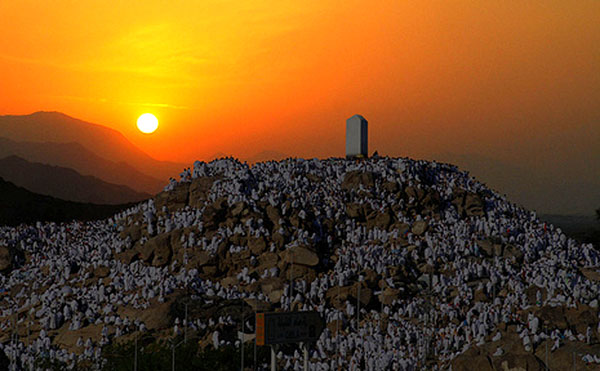
RNA – The annual Muslim pilgrimage of Hajj has reached its peak. Millions of pilgrims, who have performed the lesser hajj in the holy city of Makkah, have moved to the plain of Arafah. These pilgrims are performing the rites the Prophet Muhammad (S) performed 1400 years ago.
The ninth day of the Islamic lunar month of Dhul-Hijjah is called the Day of Arafah, since it is on this day that the Hajj pilgrims gather on the desert plain of Arafah, which is located about 22 kilometres southeast of Makkah. Spending a day on the plains of Arafah is one of the major rites of the Hajj. The pilgrims are obliged to be in this plain from noon until sunset on the day of Arafah. The pilgrims occupy themselves with prayer, recitation of the Holy Quran and supplications to their Lord. This year, the Day of Arafah falls on October 4th of the Gregorian calendar.
It is said by Muslim scholars that “Arafah” literally means knowledge and science. Arafah represents the beginning of man’s creation, our forefather Prophet Adam. It was the devil who misled our forefather and caused the downfall of Adam and his wife, Eve. For years, they were separated from each other having descended at different places. It was at Arafah that they met again. It was on the small rocky hill of Jabal ar-Rahmah (Mount of Mercy) in the centre of Arafah that their sins were forgiven by God.
The devotional aspects of the gathering at Arafah are meant to bring to mind the ultimate gathering on Resurrection Day, when every soul will await God’s judgement. For Shi’ite Muslims, the Day of Arafah recalls the last public act of the Prophet Muhammad (S) when, during his Farewell Pilgrimage he climbed up Mount Arafah and delivered his historical speech.
Imam Husayn ibn Ali (A), the third Infallible Imam, made the supplication, Du’a Arafah, one of the most famous in Shi’ite annals during the pilgrimage to Makkah on the Day of Arafah and it has been recited by Shi’ite Muslims ever since.
Ayatollah Lotfollah Safi-Golpaygani, a source of emulation, has said that on the Day of Arafah man’s prayers ascend to heaven and enlighten and complete his soul. “Thus, it is highly recommended to recite the Supplication of Arafah,” he stated.
111/112